Hanafuda cards have existed in Japan since around the 1800s. Much like the standard 52 card deck of playing cards in the West, Hanafuda cards are used to play a variety of card games. The game that is played in WotS 4 is called Koi-koi.
Suits
The suits of Hanafuda cards are determined by the flora depicted on the cards. The flora are related to the months of the year for a total of 12 suits. The picture below lists the suits in the order of the months.
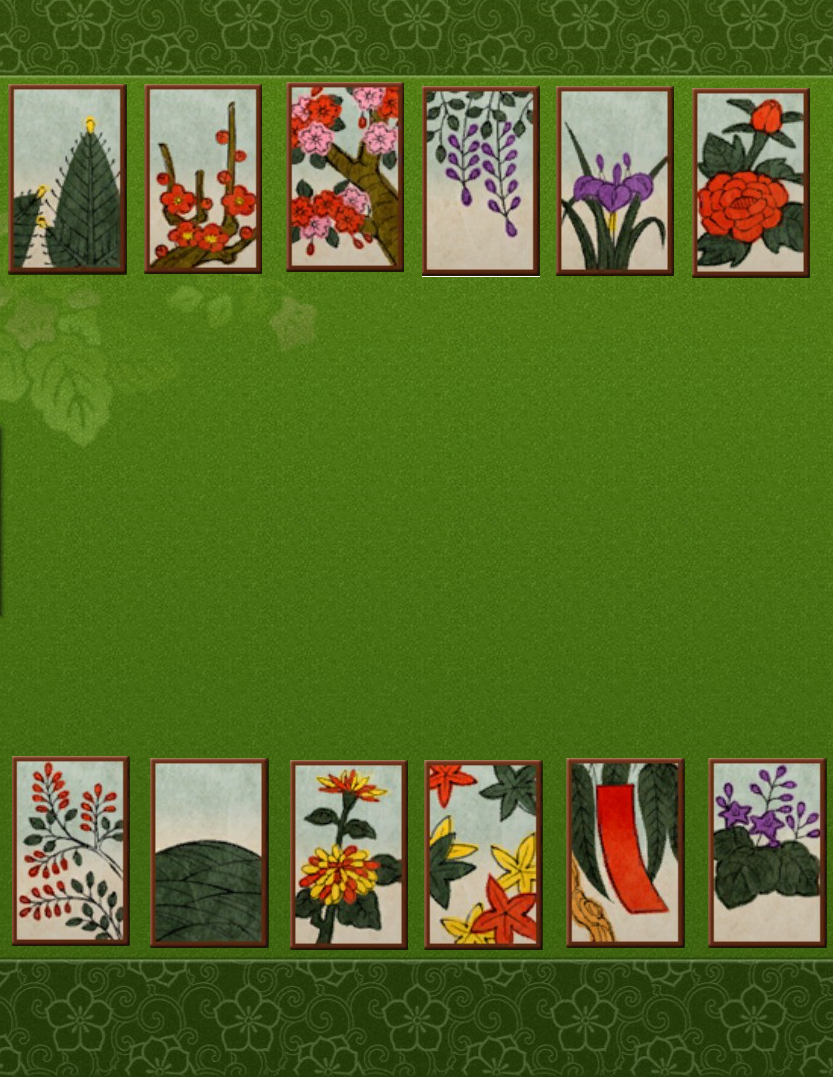
January- Pine
February- Plum blossom
March- Sakura blossom
April- Wisteria
May- Iris
June- Peony
July- Bush clover
August- Susuki grass
September- Chrysanthemum
October- Maple
November- Willow
December- Paulownia
It is not necessary to memorise the names of the flora, nor their associations. Focus instead on noticing the flora across the 4 cards of a suit.
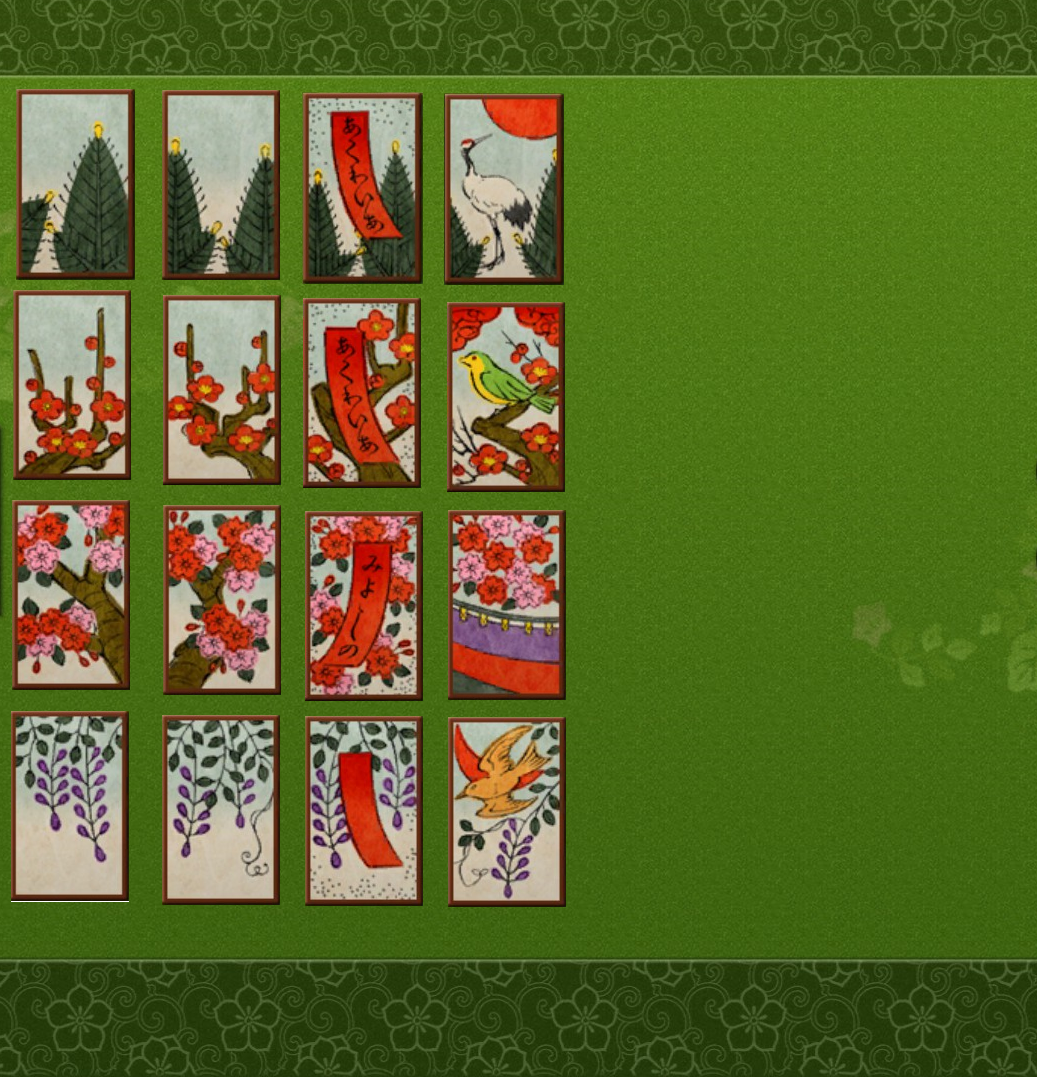
Card values
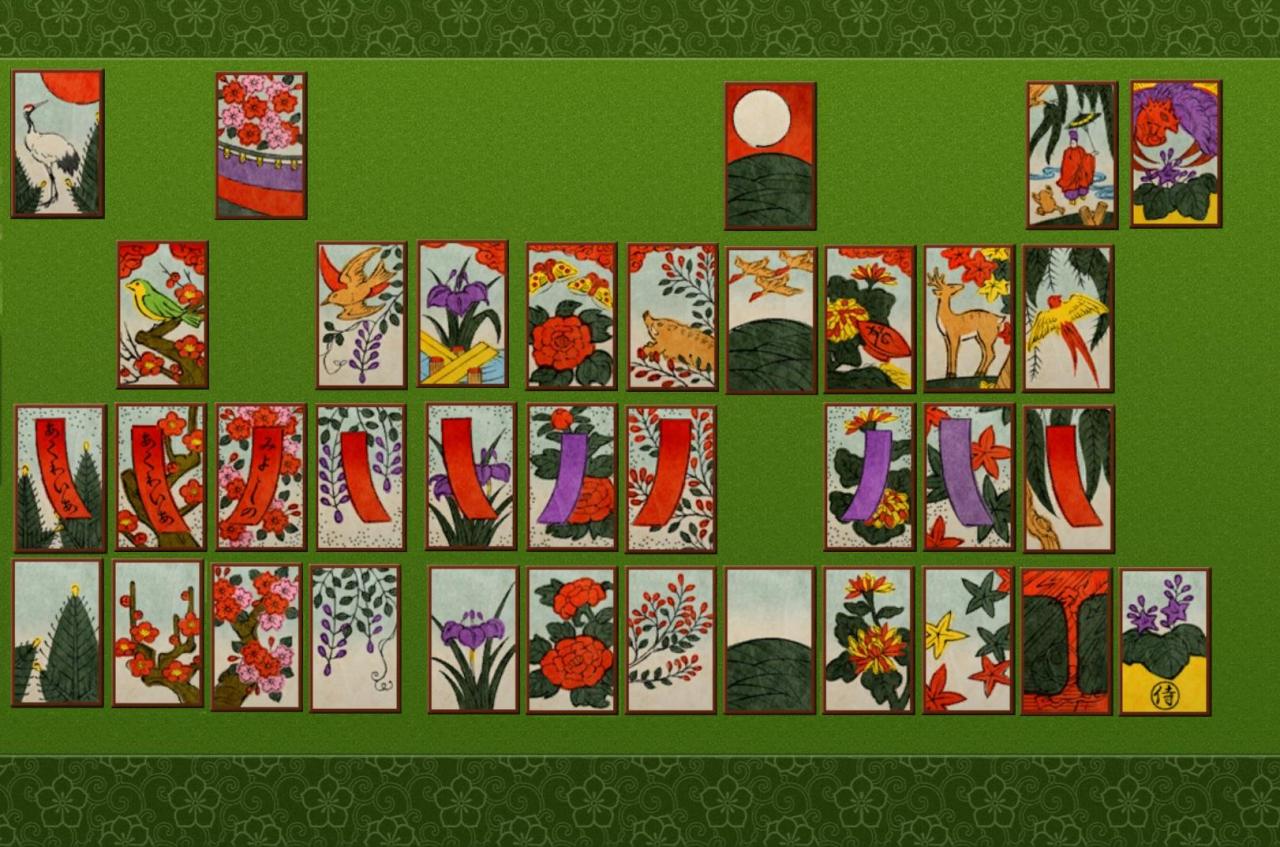
This picture does not include all of the grass cards of each suit. But each month has two grass cards except for November and December which have one and three grass cards respectively.
Special cards
There are a some cards that have special significance. This section is best understood after learning about the yaku. So for now, simply be aware of these cards.
Poetry ribbons
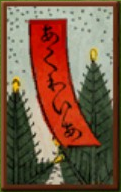
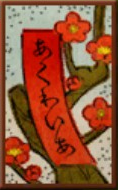
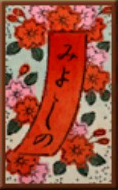
Blue Ribbons
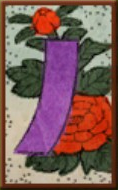
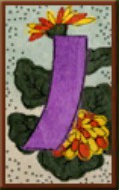
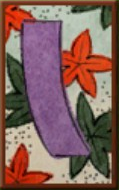
November’s bright (Ono no michikaze) does not count towards a sankou or a shikou. It can only count for an ame shikou or gokou.
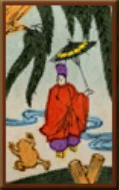
Playing Koi-koi
The basic goal of koi-koi is to match cards from your hand with cards on the table and build “yaku”. Yaku are comparable to poker hands in that they are particular combinations of cards ranked by probability.
A game of hanafuda begins by talking to any of the NPCs in this room.
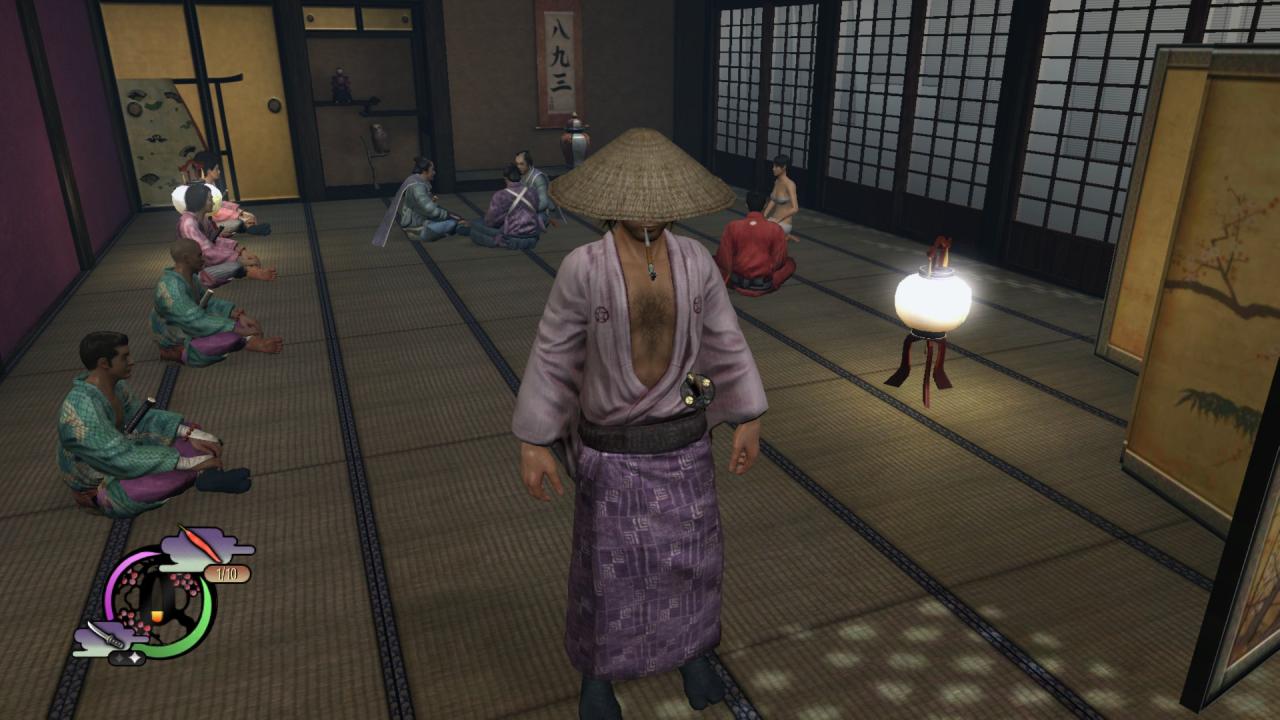
When the game begins you will be prompted for a bet. This bet will be multiplied by your score to determine payout if your win the round. If you lose your bet is multiplied by your opponent’s score to determine your lossess.
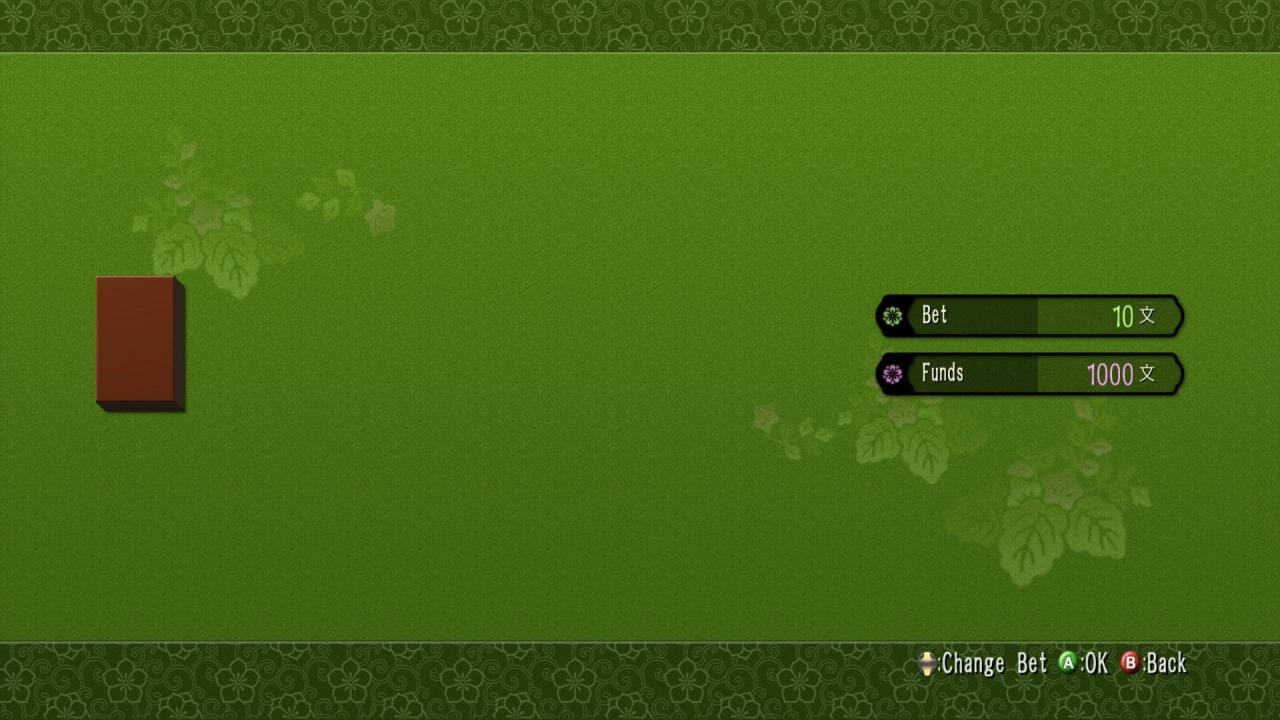
After placing your bet, eight cards are dealt to each player, and eight are placed on the table.
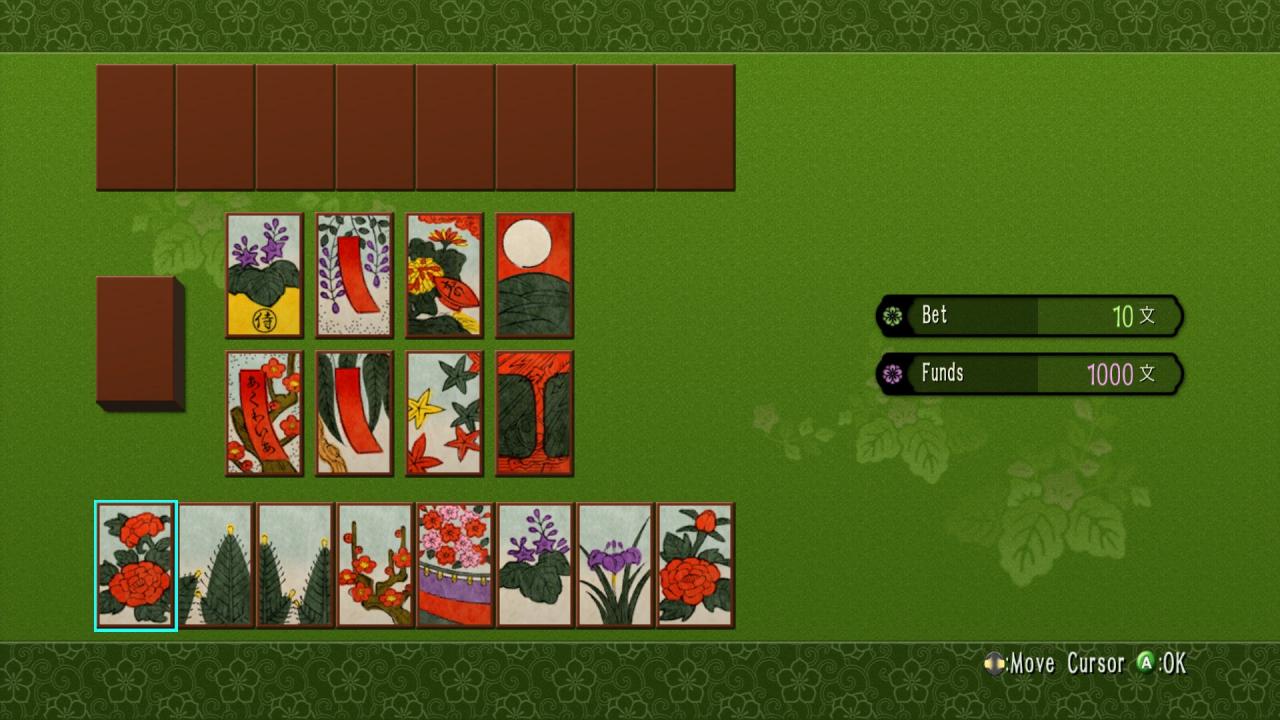
If it is the first round, or if you won the previous round, you go first. Select a card from your hand that matches a card on the table. The game highlights matches to make this easier.
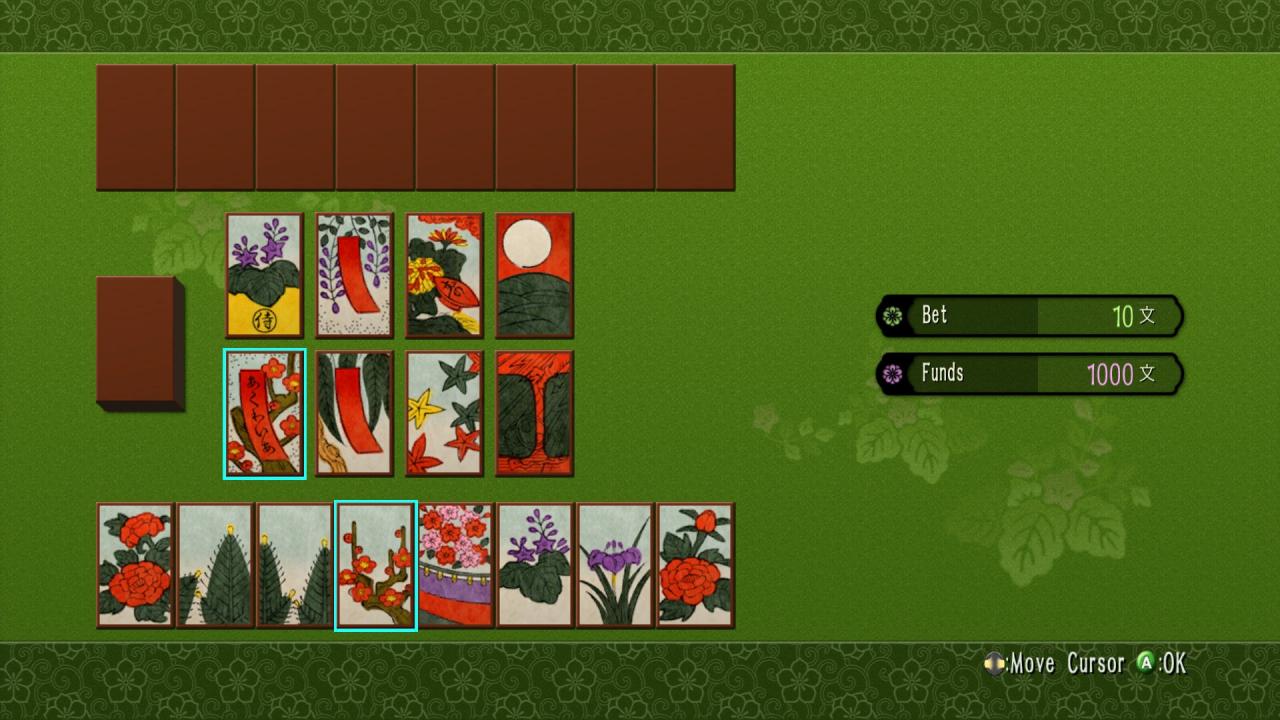
If there are no matches with your selected card it will be placed on the table with the rest. Sometimes you will be forced to do this when you have no matches, but you might also place a card to match it with another from your hand next turn. Plan carefully as your opponent might match with a card from their hand before you are able to.
When you make your selection, a set of actions will rapidly take place.
First, the selected card and its match will be added to your pile. (Or the selected card is added to the table if there isn’t a match.)
Next a card will be drawn from the deck and placed on the table. If it matches a card on the table, you instead add the pair to your pile.
Finally, your opponent will take their turn, playing a card and flipping one from the deck.
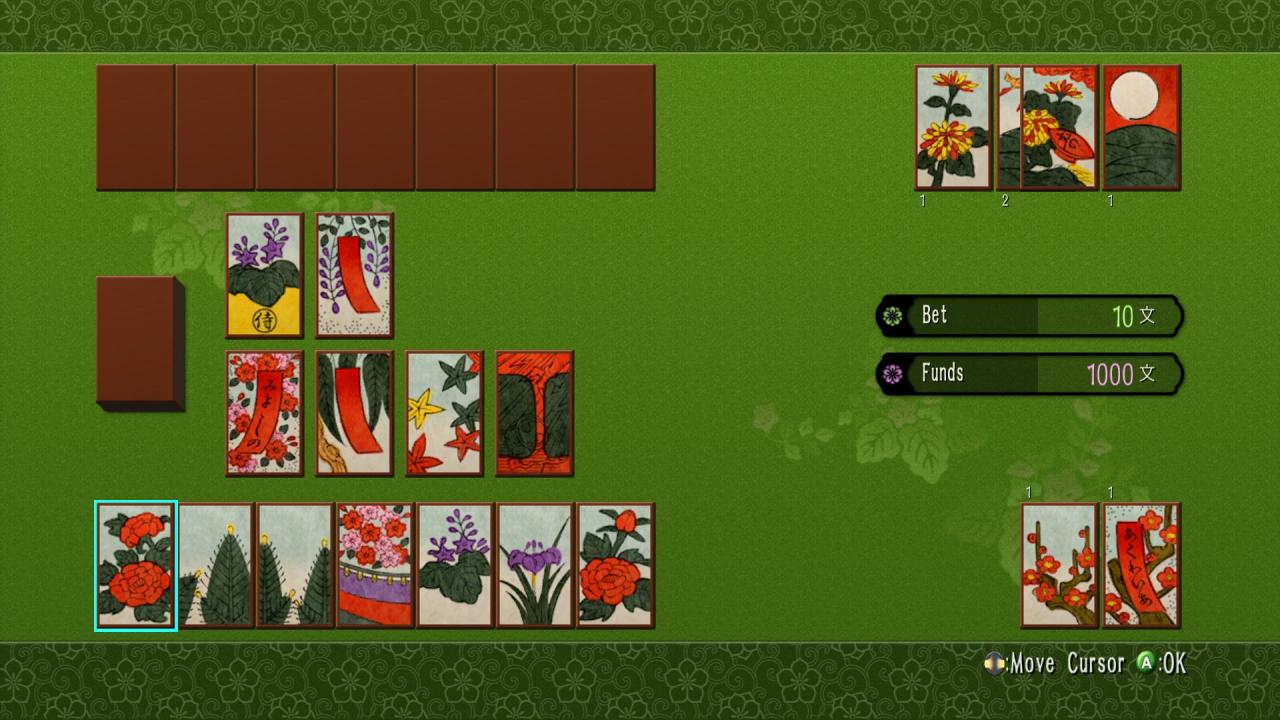
The round continues until either player completes a yaku, or until both players run out of cards. Notice that your pile and your opponent’s pile are organised by value. Starting with the brights to the right descending to the grass on the left.
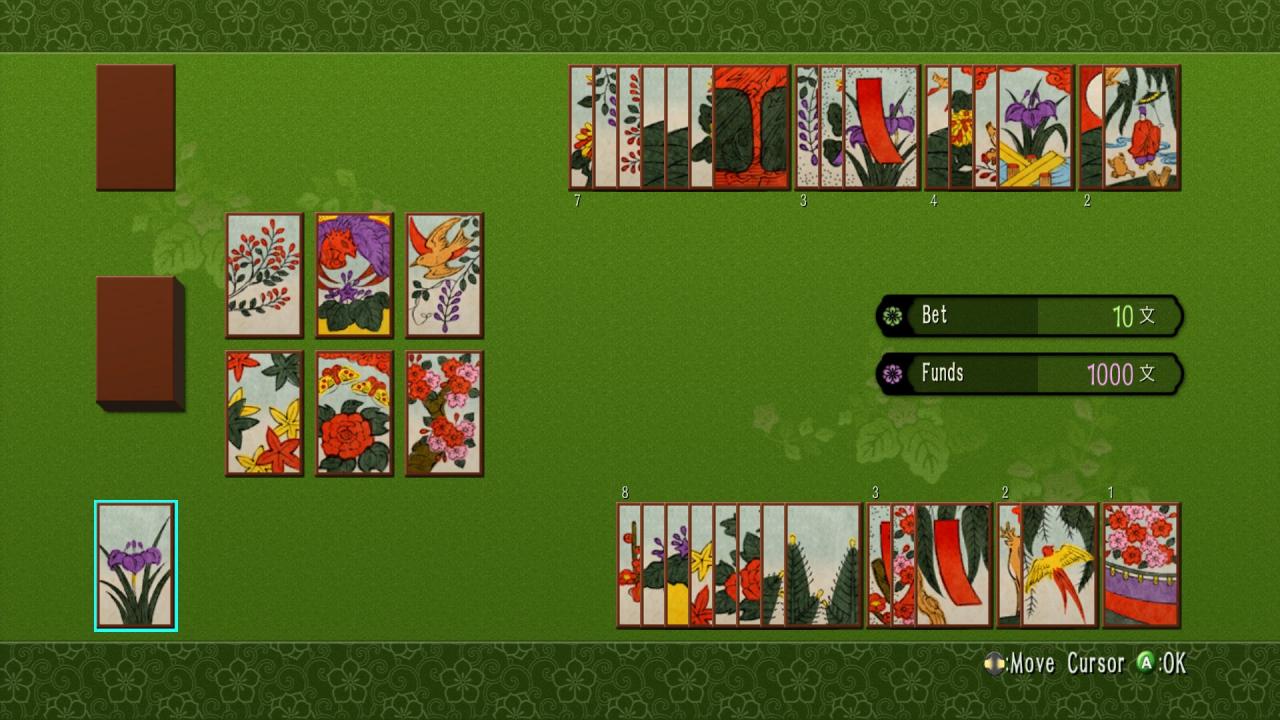
When you complete a yaku, you will be notified.
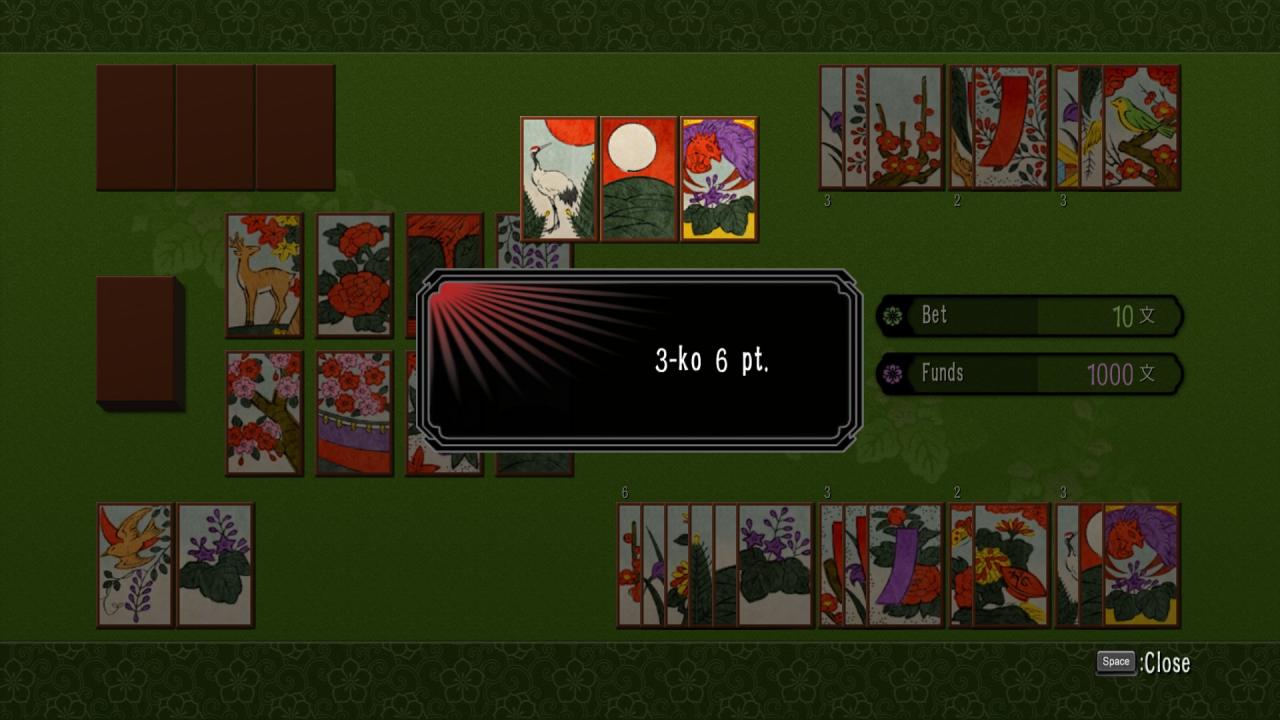
You will then be shown a summary of your score
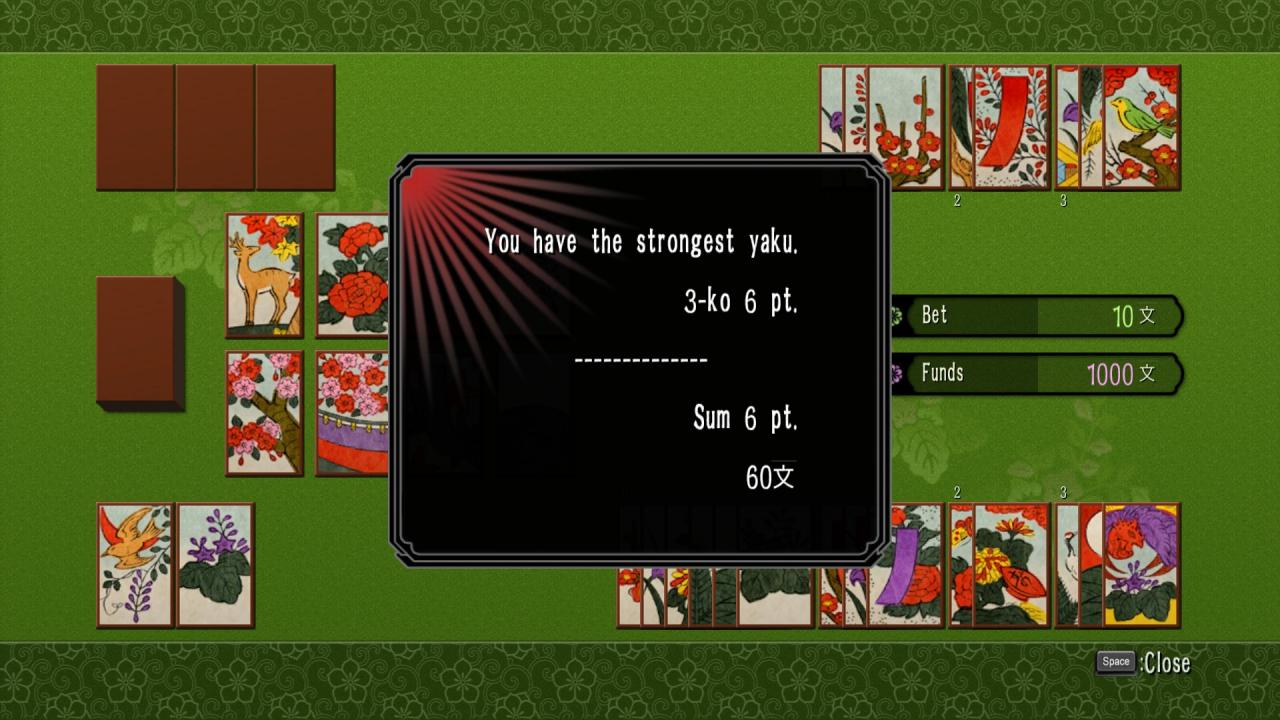
If you still have cards in your hand you will also have the option to call “koi-koi” 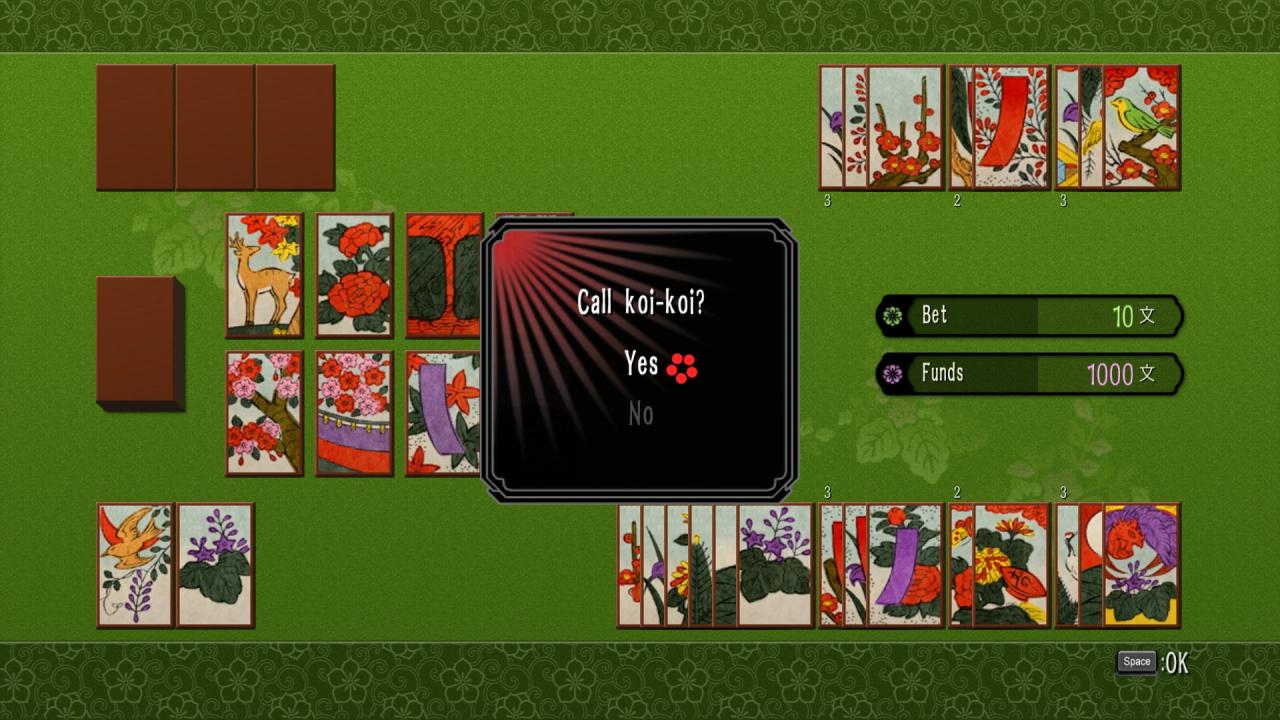
Calling koi-koi continues the round, and thus allows you to build more yaku, but plan carefully your opponent might complete a yaku and thus reverse a winning round into a loosing round.
If you complete multiple yaku, the value of each will be added together and that sum will be multiplied by your bet.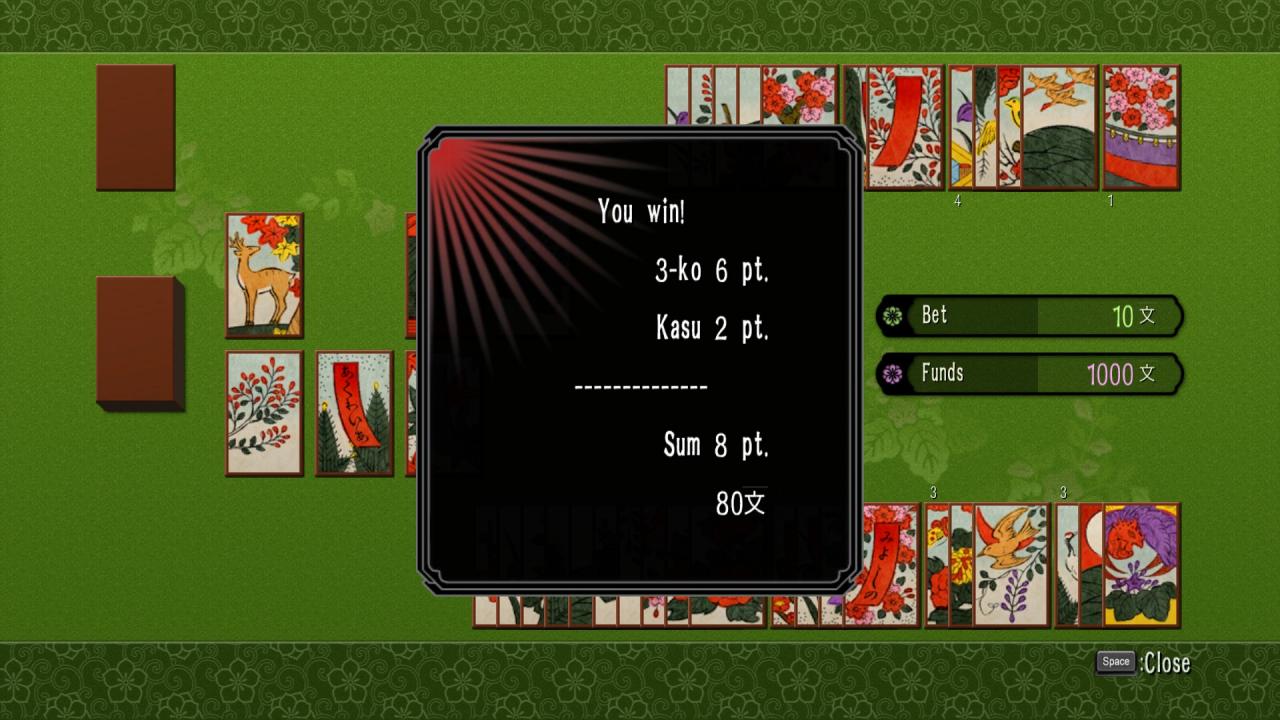
The Yaku
For some of these yaku, the example pictures present the only combination possible. For others, combinations that are not displayed may be possible.
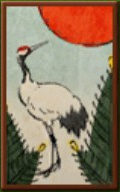
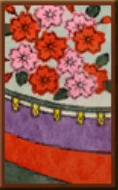
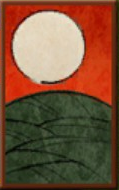

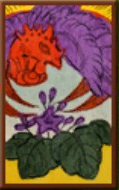 Gokou
Gokou
- Five Brights
- 15 Points






Akatan, Aotan no Choufuku
- Three poetry ribbons and three blue ribbons
- 10 Points




Shikou
- Four brights (except November’s bright-Ono no Michikaze)
- 8 Points




Ame shikou
- Three brights+ November’s bright
- 7 Points



Sankou
- Any Three brights (excluding November’s bright)
- 6 Points
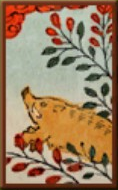
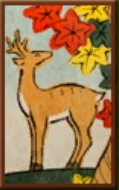
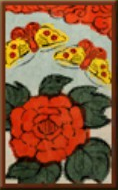
Ino-shika-chou
- Boar, deer, and butterfly
- 5 Points



Akatan
- Three Poetry ribbons
- 5 Points



Aotan
- Three Blue ribbons
- 5 Points
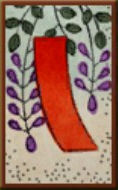
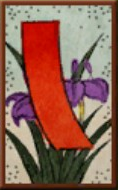


 Tanzaku
Tanzaku
- Any combination of any five ribbons. Add 1 point for every additional ribbon.
- 1+ Points


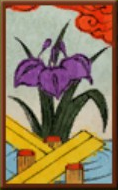
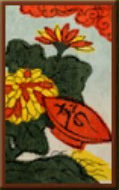
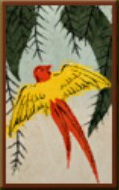
Tane
- Any combination of any five animals. This includes May and September. Add 1 point for every additional animal.
- 1+ Points
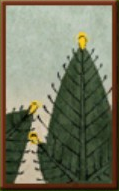
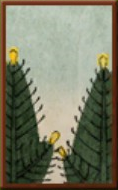
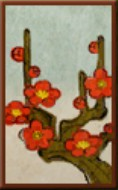
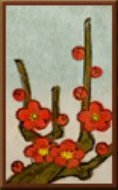
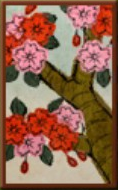
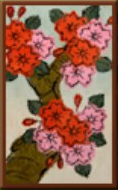
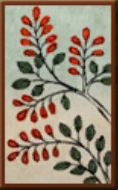
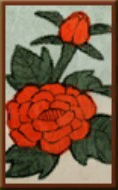
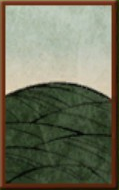
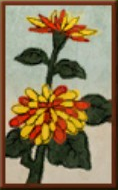
Kasu
- Any combination of ten grass cards. Add 1 point for every additional card.
- 1+ Points
By daisuke1639

